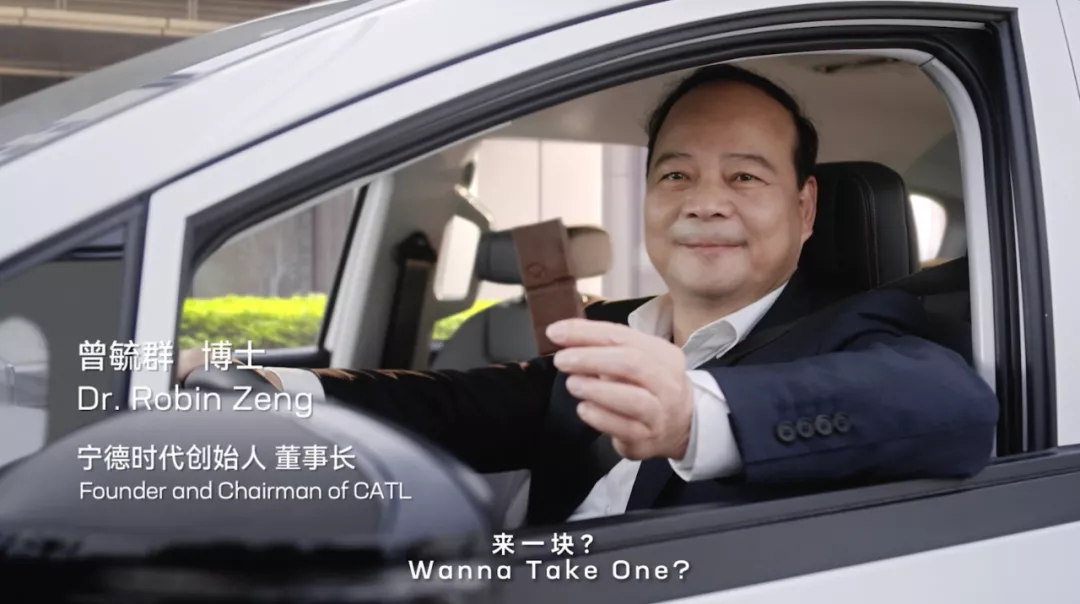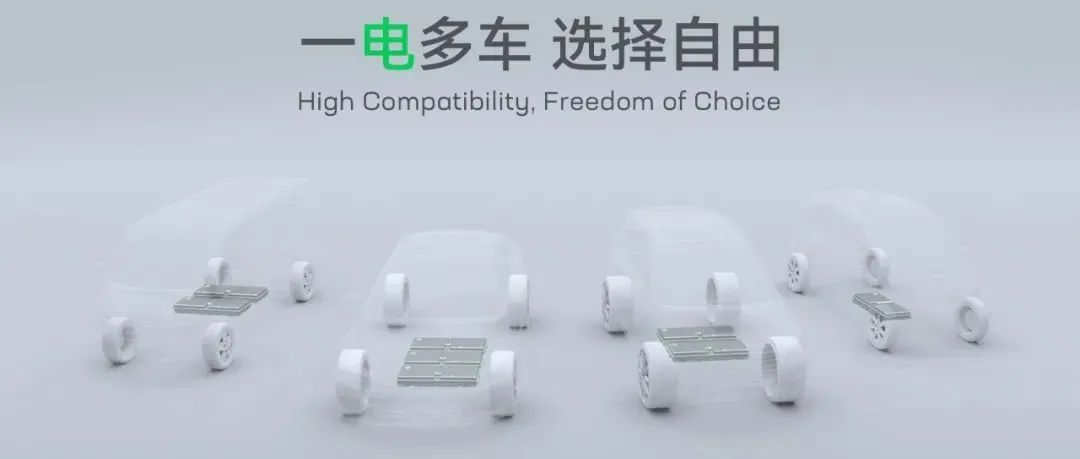Author: Xing
Introduction: Currently, due to the sharp increase in costs of the new energy supply chain, the entire new energy industry is under pressure. To continue the steady development of the industry, it is necessary to seek solutions. “Ningwang” has taken the lead in the battery swapping industry, and the timing is perfect. It is bound to once again help promote the development of the new energy industry.
On January 18th, Ningde Times subsidiary, Tesson Power, held its first online press conference and released its battery swapping service brand EVOGO and the overall solution for combination battery swapping. This means that Ningde Times has officially entered the battery swapping market.

On the same day, we noticed that Ganfeng Lithium, through its investment in Dopower (Suzhou) New Energy Technology Co., Ltd., also entered the battery swapping market.
Currently, due to the sharp increase in costs of the new energy supply chain, the entire new energy industry is under pressure. To continue the steady development of the industry, it is necessary to seek solutions. “Ningwang” has taken the lead in the battery swapping industry, and the timing is perfect. It is bound to once again help promote the development of the new energy industry.
Battery Swapping: Policy Opportunities
New energy vehicles are a major national strategy in the current low-carbon environment. In October 2020, the “New Energy Vehicle Industry Development Plan (2021-2035)” was released, completing the top-level design of the development of new energy vehicles.
According to the plan: Through 15 years of continuous efforts, China’s core technology for new energy vehicles will reach the international advanced level, with quality brands possessing strong international competitiveness. Pure electric vehicles will become the mainstream new sales vehicles, public-use vehicles will be fully electrified, fuel cell vehicles will achieve commercial applications, highly automated driving vehicles will achieve scale applications, convenient and efficient charging and swapping service networks will be established, hydrogen fuel supply systems will steadily promote, and effective promotion of energy-saving and emission reduction levels and social operation efficiency will be achieved.
Specifically, it accelerates the application of new energy vehicles in time-sharing leasing, urban public transportation, taxi, and field vehicles, and optimizes the use environment of new energy vehicles in public service areas.
These are just the market entry for electric vehicles, but what about the use stage?
As we all know, battery charging and endurance have always been the Achilles’ heel of electric vehicles. Aside from improving battery technology, swapping batteries seems to be the best solution beyond the large-scale deployment of charging stations.
The exploration of the battery swapping model is best illustrated by the most typical case, Better Place, in Israel. Better Place is a company dedicated to creating a unified global electric vehicle network. They hope to unify standards and create a data operator-like enterprise that can repair, maintain, and replace the batteries of any brand of electric vehicle.Just as the failure of Better Place has demonstrated, the battery swapping mode faces numerous challenges: difficulties in unifying swapping standards, high upfront investment in building swapping stations, etc.
However, these are not issues for us as the government leads the industry. We have the advantage of being able to unify standards and overcome any obstacles through scale.
In 2021, the Ministry of Industry and Information Technology (MIIT) initiated the battery swapping promotion work by implementing the “Development Plan for the New Energy Vehicle Industry (2021-2035)” and releasing the “Notice on Launching Pilot Work of New Energy Vehicle Battery Swapping Mode Application.”
China’s new energy battery swapping is ready, just waiting for the right opportunity.
Time EVOLUCK: Serving the Country, Themselves, and the People
Time EVOLUCK, the fully-owned subsidiary of CATL, announced the battery swapping service brand EVOGO and the overall solution for combination battery swapping in order to provide users with a mobile power solution and service that is convenient and reliable, consisting of three products: “swappable battery modules, fast-swapping stations, and an app.”
With standardized battery modules, stations built with capital investment, and an app-based swapping community service, the battery swapping solution is nearly standardized and perfect.
Details are also interesting. Fast-swapping stations boast four features: small footprint, fast turnover, large capacity, and all-weather. Each standard station only needs three parking spaces, and swapping a single battery takes about 1 minute. The station can store up to 48 swappable battery modules, which is more comprehensive than existing battery swapping systems.
During the launch event, CATL also unveiled the combination battery swapping version of FAW B30, which is the first member of the “Little Green Circle Family” under EVOGO. In the future, EVOGO will select ten cities for the first batch of battery swapping services and release more brands of battery swapping vehicles.
For top battery companies such as CATL, entering the battery swapping industry is undoubtedly in line with the national interest and market trends, since the penetration rate of electric vehicles will continue to increase and the market outlook is huge. By spearheading the effort to standardize battery swapping, it is a win-win situation for all parties involved.## Battery Swapping: A Window for Commercial Model
Battery swapping does not mean the exclusion of charging piles. Vehicles with battery swapping technology can still use charging piles to replenish energy. On the contrary, battery swapping will have distinct characteristics of a closed ecological system and a narrow service network. Battery-swapping vehicles still need charging piles with stronger network capability for energy replenishment.
The advantages of battery swapping are as follows:
- Fast replenishment, significantly improving efficiency
Currently, New Energy Vehicles (NEVs) are charged through charging piles, taking between 0.5-2 hours to fully replenish. In contrast, battery swapping only takes 3-5 minutes, about 1/10 of the time needed for fast charging. It is equivalent to refilling a fuel-powered car and greatly shortens the replenishment time for pure electric vehicles, significantly improving the efficiency of NEVs.
- Improved safety, extension of battery lifespan
Compared with charging piles, swapping station batteries will be charged in a more scientific and standardized way. The swapping station should monitor the battery’s status and perform tests and maintenance timely. Objectively speaking, this will reduce damage to the power battery and the attenuation of capacity, prolonging lifespan and greatly enhancing the safety of the battery and electric vehicles.
- Flexible layout, breaking the demand for site requirements
Battery swapping does not require vehicles to occupy charging piles for long periods. This breaks the demand for charging piles for site requirements. Additionally, the high efficiency of swapping can adopt retail store swapping in the bustling commercial area, swapping in suburban charging stations and distribution network points, expand network coverage, and significantly reduce the costs of sites and operations.
- Power grid peak-shaving, distributed energy storage
The battery-swapping model also has significant social value, such as power grid peak-shaving. It can charge during low-power demand periods such as midnight. After large-scale battery swapping operations, it will become an exemplary application for grid peak-shaving and distributed energy storage.
The only disadvantage of battery swapping is the lack of a unified interface standard and compatibility of application layers to achieve economies of scale. However, after the top-level planning by the government, these difficulties will be solved. The opportunity for battery swapping is here!
It can be foreseen that with the comprehensive electrification of vehicles in the public sector, fields such as car-sharing, urban public transportation, taxis, and site vehicles will gradually shift to electric vehicles. The penetration rate of battery swapping markets in cities and specific scenarios will increase, further expanding and strengthening the energy replenishment market.
In fact, as the electric vehicle market continues to expand, and with the optimistic outlook for electric vehicles, various sectors have already begun to lay out the battery-swapping market.
For CATL, compared to other manufacturers’ battery-swapping businesses, CATL’s electric powertrain system is more inclusive and welcoming. Furthermore, CATL and new entrants such as grid and energy companies are natural partners. In the battery swapping market, CATL has a natural advantage.## Conclusion
Battery swapping service is a necessary expansion of Ningde Times’ business model. Considering the market share of Ningde Times’ tire1 battery business, it is unlikely to increase significantly, and there may even be a risk of market share reduction. The swapping service industry may be the best new business branch for Ningde Times.

In this trend, Era Electric Service (Evogo) is a tough competitor for Ningde Times. However, compared to Tesla’s energy strategy, Ningde Times may need to be more aggressive and explore more in the energy sector.
This article is a translation by ChatGPT of a Chinese report from 42HOW. If you have any questions about it, please email bd@42how.com.
